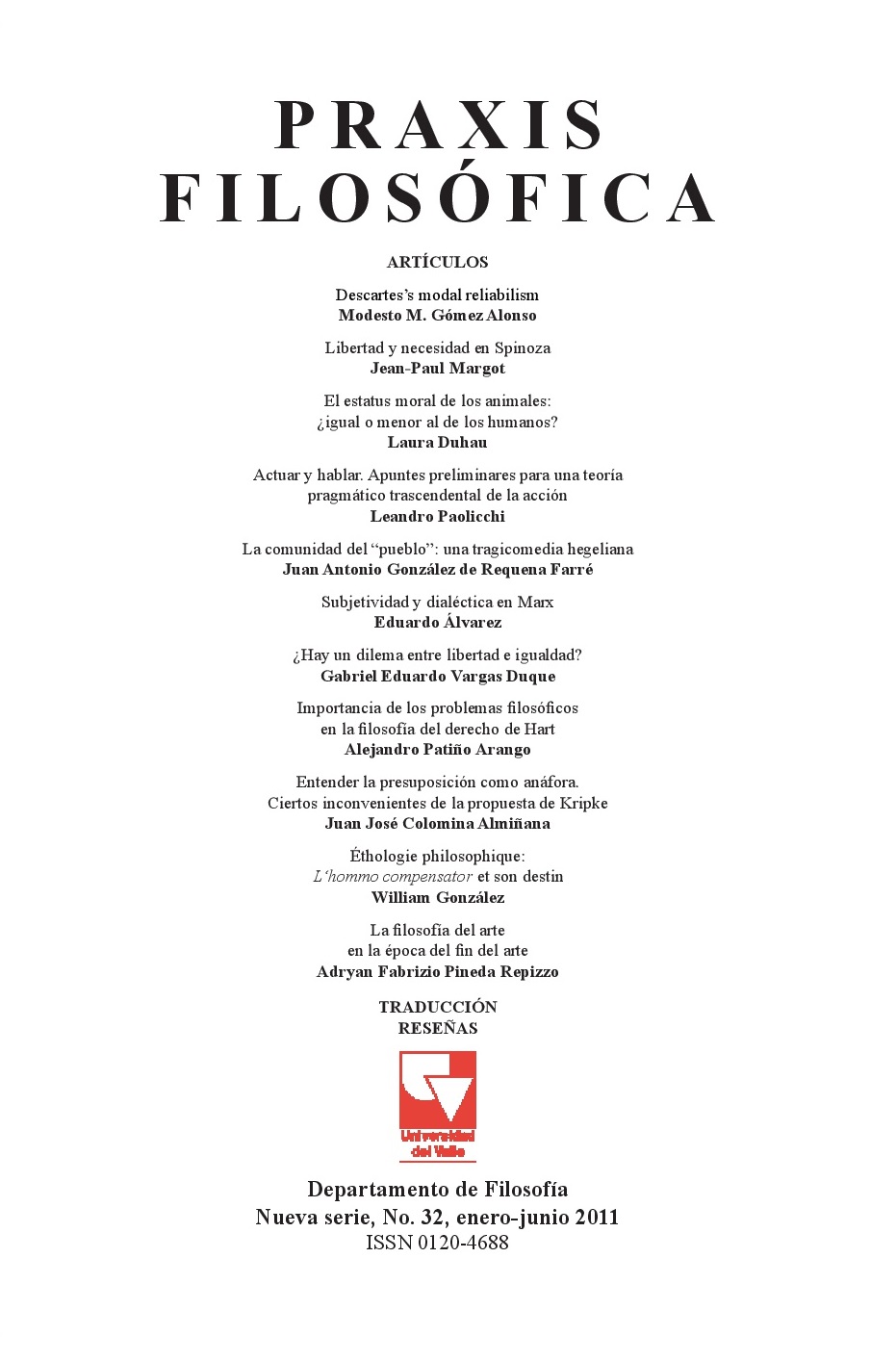El estatus moral de los animales: ¿igual o menor al de los humanos?
Contenido principal del artículo
Dentro de las posturas que consideran que los animales tienen estatus moral, hay dos tipos de posturas: las que consideran que los animales tienen el mismo estatus moral que los humanos, y las que consideran que los animales tienen menos estatus moral que los humanos. En este artículo argumento que ambos tipos de posturas son práctica y teóricamente equivalentes. En primer lugar, argumentaré que dichas posturas no hacen ninguna diferencia práctica, en tanto desde ellas pueden justificarse los mismos juicios morales. En segundo lugar, argumentaré que, aunque superficialmente pareciera que los mismos juicios morales se justifican de distinta manera desde cada tipo de postura, haciendo un análisis más profundo puede verse que esto no es el caso. De este modo, tampoco hay una diferencia teórica sustancial entre los dos tipos de posturas. Por lo tanto, estos dos tipos de posturas no constituyen diferentes opciones en la defensa de los derechos de los animales.
- Estatus moral
- estatus moral
- obligaciones morales
- derechos animales
- reclamos morales
CARRUTHERS, P. (1992). The Animals Issue. Cambridge, Cambridge University Press.
CARRUTHERS, P. (2010a). “Animal mentality: its character, extent and moralsignificance”, en: R. Frey and T. Beauchamp (eds.), Handbook on Ethicsand Animals. Oxford, Oxford University Press.
CARRUTHERS, P. (2010b). “Against the moral standing of animals”, en: C.Morris (ed.), Practical Ethics: questions of life and death. Oxford, OxfordUniversity Press.
CAVALIERI, P. (2001). The Animal Question: Why Nonhuman AnimalsDeserve Human Rights. New York, Oxford University Press.
COHEN, C. (1986). “The case for the use of animals in biomedicalresearch”, The New England Journal of Medicine, 315, pp. 865-870.
DEGRAZIA, D. (2008) “Moral Status As a Matter of Degree?”, TheSouthern Journal of Philosophy, vol. XLVI, pp. 181-198.
FREY, R.G. (1988). “Moral standing, the value of lives, and speciesism”,Between the Species, 4, pp. 139-152.
GUTHRIE, R.D. (1967-1968). “The ethical relationship between humansand other organisms”, Perspectives in Biology and Medicine, 12, pp- 52-62.
HARMAN, E. (2003). “The Potentiality Problem”, Philosophical Studies,114, pp. 173-198.
LI, H. (2002). “Animal Research, Non-vegetarianism, and the Moral Statusof Animals – Understanding the Impasse of the Animal Rights Problem”,Journal of Medicine and Philosophy, vol. 27-5, pp. 589-615.
NODDINGS, Nell (1984). Caring: A Feminine Approach to Ethics andMoral Education. Berkeley and Los Angeles, University of California Press.
REGAN, T. (1983). The Case for Animal Rights. Berkeley & Los Angeles,University of California Press.
SHAPIRO, P. (2006). “Moral Agency in Other Animals”, Theoretical Medicine and Bioethics, 27, pp. 357-373.
SINGER, P. (1990) Animal Liberation. 2nd Edition. New York, Avon Books.
STEINBOCK, B. (1978). “Speciecism and the idea of equality”,Environmental Ethics, 3, pp. 197-218.
STEINBOCK, B. (1992). Life before Birth: The Moral and Legal Status ofEmbryos and Fetuses. New York, Oxford University Press.
SUMNER, L. W. (1981) Abortion and Moral Theory. Princeton. NJ,Princeton University Press.
WARREN, M. A. (2003). “Moral Status”, en: R.G. Frey y C. HeathWellman (eds.), A Companion to Applied Ethics. Oxford, Blackwell.
Descargas

Esta obra está bajo una licencia internacional Creative Commons Atribución-NoComercial-CompartirIgual 4.0.
De acuerdo con nuestra política (Licencia Creative Commons CC BY-NC-SA 4.0) los artículos presentados y sometidos al proceso editorial en la revista Praxis Filosófica no tienen costo alguno para sus autores ni retribuciones económicas para la revista. El artículo de carácter inédito, producto de investigación o de algún proyecto que se presente a Praxis Filosófica, no podrá estar sometido a otro proceso de publicación durante el proceso que se lleve en nuestra revista.





